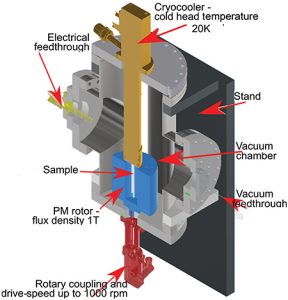Risk Reduction on Fully Superconducting Machine for Hydrogen-Powered Electric Aircraft Propulsion
PhD student Balachandran Thanatheepan with Advisor K. Haran
A cryogenic hydrogen-energy electric aircraft is proposed to utilize the high specific energy content of liquid hydrogen (LH2) through fuel-cell energy conversion and an ultra-efficient distributed electric propulsion. The concept uses LH2 both as the energy-storage mechanism and as a cryogen to enable a highly efficient superconducting (SC) electric system. This enables using SC machines with SC power cables to efficiently convert electrical energy into mechanical energy. Letting gaseous hydrogen employed in the fuel cells evaporate by heat losses in the SC motor and cables, the system provides free cryogenic cooling for SC electrical components. If the required cryogenic power to remove generated heat losses in the electrical system is maintained below the available free cooling, an ultra-efficient electrical system could be obtained using this concept.
The first phase of the project, a fully SC 2.5 MW motor is designed with 25 kW/kg specific power. In phase 2, three experiments are planned. To validate the feasibility of the fully SC machine, an magnesium diboride (MgB2) armature winding will be fabricated and tested under operating conditions. A rotating rotor cooling is designed and tested (Figure 4)
to demonstrate rotor cooling. An ac-loss test setup is designed, as shown in Figure 5, to validate the ac-loss models used in optimizing the machine. This research is funded by the NASA CHEETA project.

